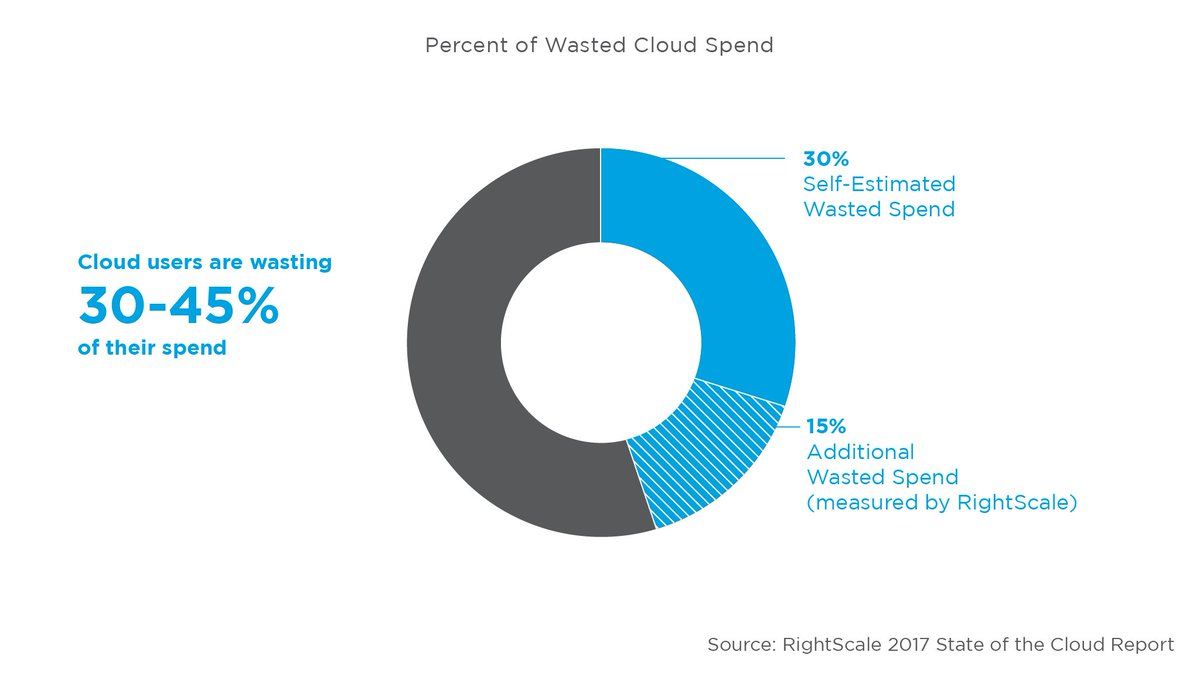By 2020, 92 percent of all workloads will reside in the cloud. Yet challenges remain. Here is how to make your journey a success.
The cloud has become the preferred hosting location of choice, with 95 percent of organization taking advantage of it, as highlighted in Rightscale’s 2017 State of the Cloud Report. Almost eight out of ten workloads are already operated in the sky, leveraging a portfolio of public, private and hybrid clouds. By 2020, as much as 92 percent of all workloads will be cloud-based; only 8% will be processed by traditional data centers, according to Cisco’s Global Cloud Index: Forecast and Methodology, 2015–2020.
By 2018, IDC expects the average organization will have just 40 percent of its IT infrastructure residing On-Premises. The share of wallet for cloud-based deployments will reach 43 percent by 2018, representing a 44 percent increase compared to 29 percent in 2016. Meanwhile, spending on traditional IT infrastructure (non-cloud) will further decline as companies embrace a “cloud-first” or “cloud-only” policy.
Organizations opting for the cloud take advantage of greater flexibility and much faster deployment cycles as new IT resources can be commissioned in no time, without having to wait until new hardware has arrived. They also benefit from greater scalability and higher availability, making services easier to adjust to changing market demands and more reliable to operate. Unlike their less cloud-savvy rivals, these organizations also benefit from improved business continuity and disaster recovery, which helps to ensure high levels of productivity and customer satisfaction.
Interestingly, organizations transitioning from cloud laggards to cloud innovators, report that their cloud-enabled benefits—such as faster access to infrastructure, greater scalability and higher availability—actually continue to increase. In other words, these companies discover that the core benefits of hosting workloads in the cloud further increase as they progress on the experience curve.
Although C-suits around the globe are busy with executing digital strategies and drafting new operating models, still bread and butter business is what drives cloud adoption. According to the Rightscale report, 53 percent of cloud users cite cost savings as their top priority for this year.
Some workloads are more cloud-friendly than others. To make an informed decision where to host a given workload, companies need to evaluate a variety of aspects. This typically includes the company’s overall IT strategy, the existing IT landscape as well as specific business needs. Other key factors as far as suitability goes include performance, complexity, compliance, compatibility, and interoperability.
Cloud-friendly workloads can take advantage of the cloud’s core benefits, including availability, elasticity and scalability. Rightscale’s research discovered that the workloads most preferably hosted in the cloud include:
Business-sensitive workloads such as accounting software and business analytics tend to be operated in a private cloud—yet the tides are shifting as enterprises increasingly leverage public clouds even for business-critical applications.
Organizations are steadily shifting more of their workloads from legacy data centers to the cloud. While the public cloud was primarily used for test and development purposes in the beginning, enterprises are increasingly comfortable with storing their proprietary digital assets there at scale. The Cisco report predicts that by 2020, 68 percent of the cloud workloads will be in the public space, up from 49 percent in 2015. At the same time, workloads in the private cloud will decrease from 51 percent to 32 percent. As organizations gain cloud-maturity, workloads tend to become more sophisticated and complex. By 2020, only 17 percent of the total cloud workloads will be Infrastructure-as-a-service (IaaS) workloads, down from 26 percent in 2015. Software-as-a-service (SaaS) workloads will substantially increase and reach 74 percent, up from 65 percent in 2015. With 8 percent by 2020, platform-as-a-service (PaaS) workloads will be slightly down from 9 percent in 2015.
Organizations underestimating the transition and transformation (T&T) efforts when moving workloads to the cloud, run the risk of falling behind their project schedule, thereby requiring more resources and creating additional costs to complete the mission. Moreover, building a solid business case beforehand with planned volumes (number of instances/nodes, storage etc.) is key to see whether and when a transition pays off, and how costs will develop over time as volumes increase. Incorrectly allocating IT infrastructure is another common mistake, either by being too optimistic during the planning process or due to poor capacity monitoring. Somewhere between 30 to 45 percent of the cloud spending is assumed to be wasted, as highlighted in the Rightscale report. Hence, planning is pivotal to make the cloud journey a success.

Having adequate IT staff, including the need to both recruit and retain employees who possess the necessary cloud expertise, is vital too. Technology is advancing rapidly, making continuous education and trainings necessary but also a costly undertaking. Due to the overall shortage of skilled labor in the market, wages are also pushed up as demand outweighs supply.
Going forward, companies need to extend their capabilities to deal with increasing complexity. As a result of the broader cloudifcation and digitization trend, IT landscapes tend to become far more diversified and spread across a multitude of providers. Already today, 85 percent of enterprises opt for a multi-cloud approach with 58 percent using a hybrid strategy, as recently concluded by Rightscale. This number is expected to further increase. Therefore, the ability to orchestrate an ecosystem of providers and leverage a maximum level of automation will be key success factors to operate a diversified portfolio of cloud-based assets without frictions.
By Marc Wilczek





